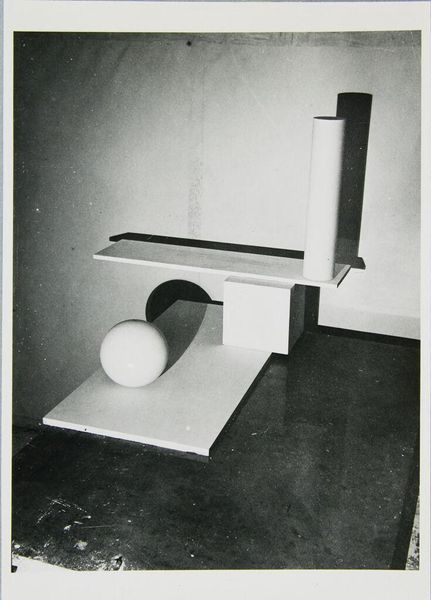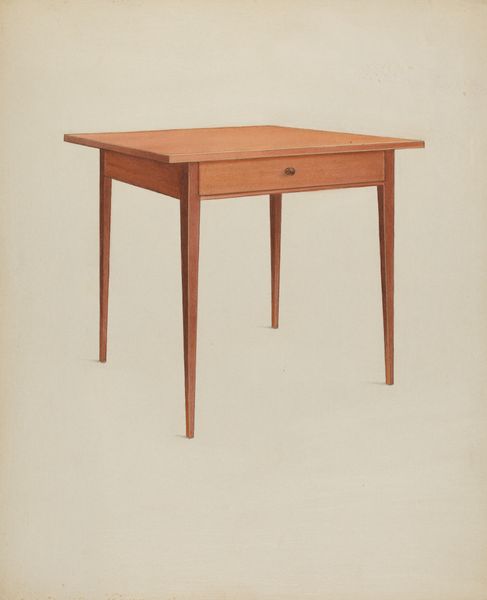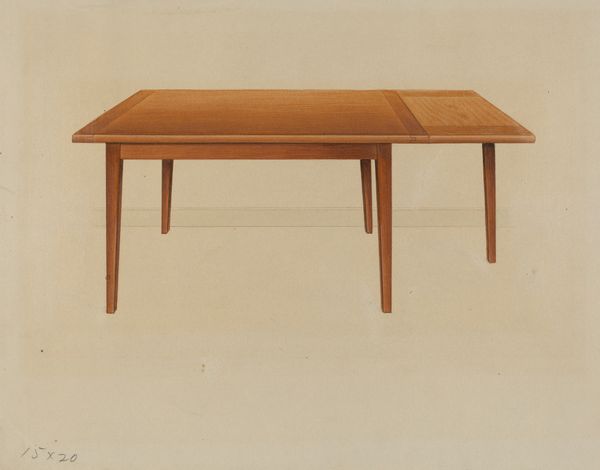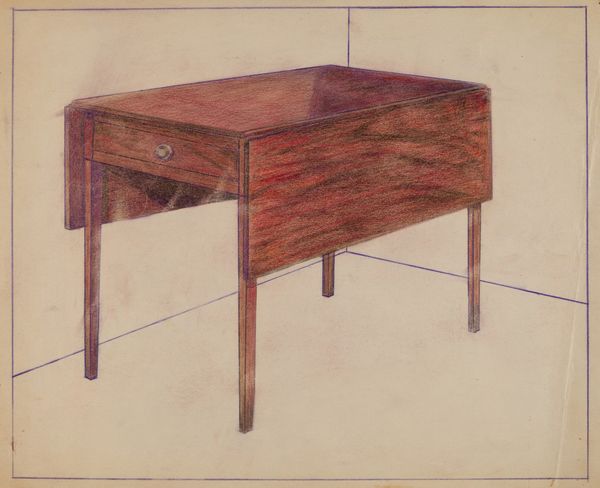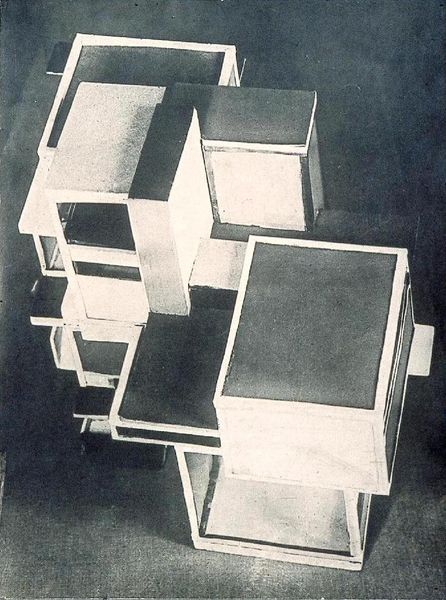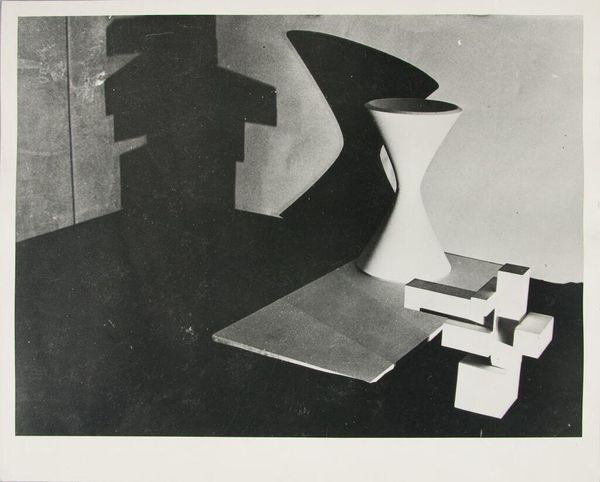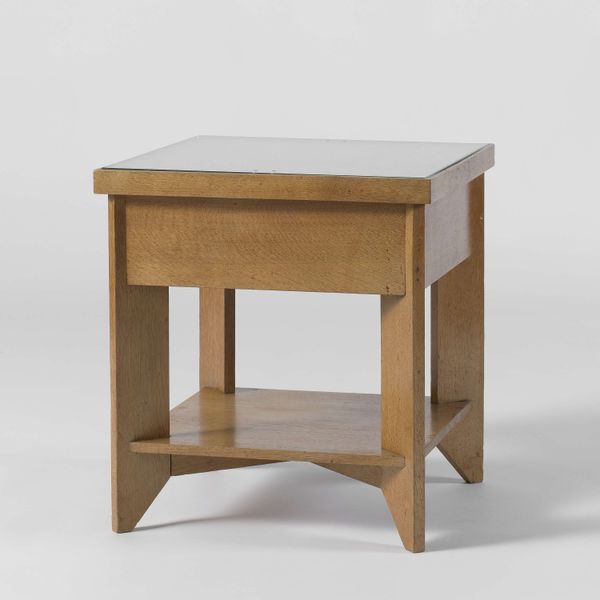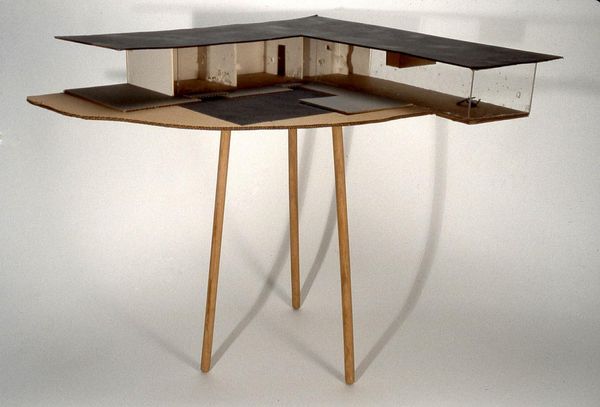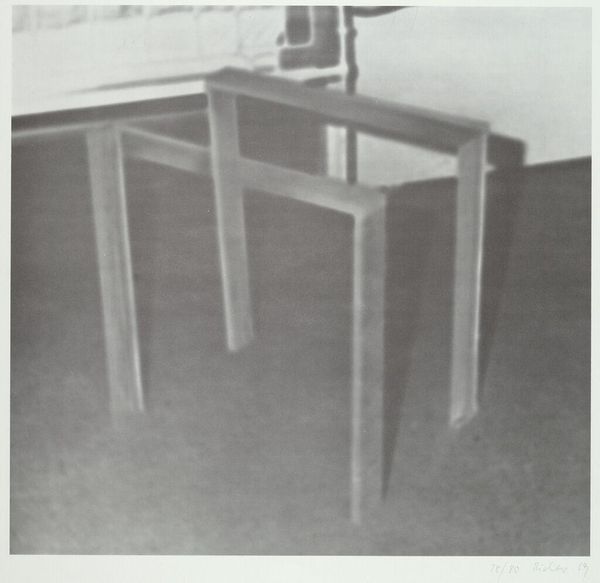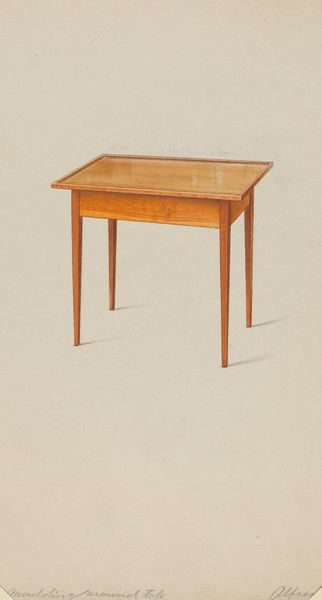
Door Siebold van Ravesteyn ontworpen tafel voor het huis van M.R. Radermacher Schorer, Wilhelminapark 12, Utrecht c. 1924
0:00
0:00
anonymous
Rijksmuseum
wood, architecture
#
de-stijl
#
table
#
light coloured
#
furniture
#
geometric
#
neutral colour
#
wood
#
modernism
#
architecture
Dimensions: height 129 mm, width 172 mm
Copyright: Rijks Museum: Open Domain
Editor: Here we have a wooden table, dating from around 1924, designed by Siebold van Ravesteyn for M.R. Radermacher Schorer's house in Utrecht. It's quite striking, almost architectural in its form, and the stark contrast between the light and dark wood gives it a real sense of depth. What historical context can you offer about this unique piece? Curator: It’s fascinating how this table embodies the spirit of the De Stijl movement, which emerged during a period of intense social and political change following World War I. Think about the broader context: artists and designers were seeking a new visual language, one that rejected ornamentation and embraced abstraction as a means of achieving social harmony. The table’s geometric shapes and the restricted color palette are clear indicators of that impulse. Does this reflect how radical design was viewed back then? Editor: It’s true! And how furniture could reflect social and political values. How was it received? Curator: Well, initially, the radical simplification could have been perceived as cold or uninviting by some. Yet, figures who embraced social reform through architecture and interior design championed such objects because they signified a break from the past and an embrace of a utopian future. What about its location? The house it was designed for? Editor: Ah! Knowing it was designed specifically for a home emphasizes its functionality within a modern living space. The piece really embodies how form follows function and it definitely shows how a seemingly simple table could carry so much cultural significance. Curator: Exactly. It serves as a reminder that even everyday objects can be powerful carriers of social and political meaning. Editor: I'll never look at a table the same way again! Curator: Me neither! There's always something new to uncover.
Comments
No comments
Be the first to comment and join the conversation on the ultimate creative platform.

